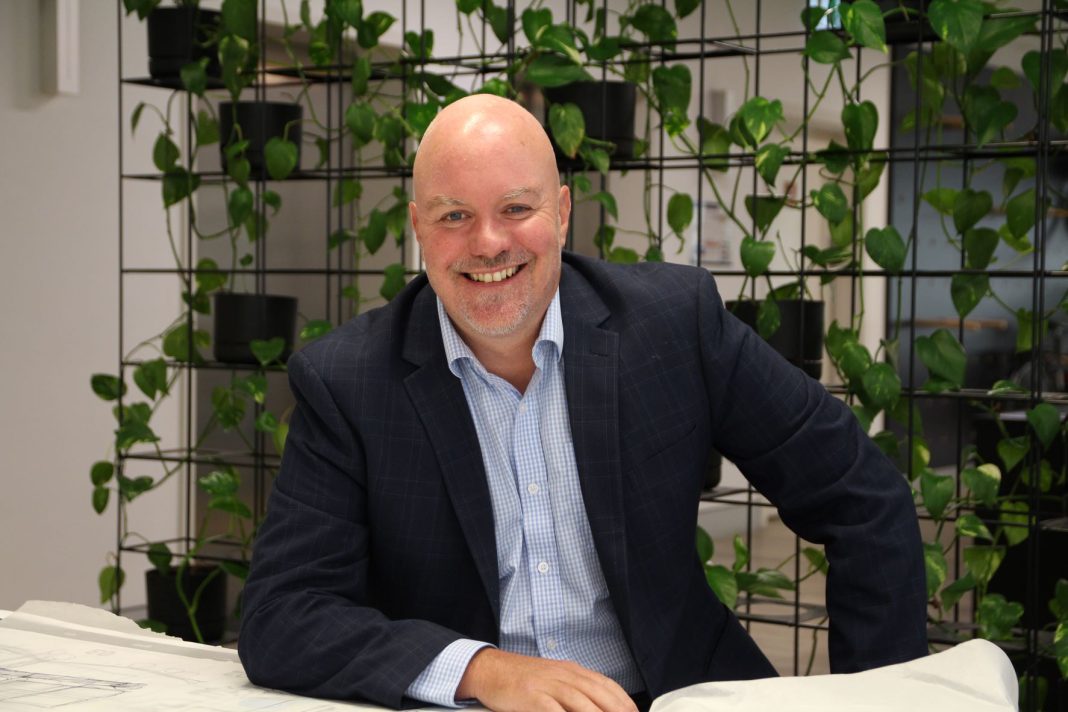Managing urban growth and change to maintain to the speed of social, environmental, and economic growth is no simple task.
To get insight into what Canberra’s economic future could look like, CW sat down with new economics director for Hatch and RobertsDay, Richard Brice, to hear his predictions.
Could you ever see Canberra as having sustainable houses across 100 per cent of the Territory?
“It’s interesting … we’ve worked on projects in Victoria recently and there’s a lot of star rating debate for commercial and housing developments. Commercial developers are starting to realise if they achieve a 6-star rating, it pays for positive dividends in their projects. In housing developments, tenants pay more for sustainable houses, which funds the project, and they pay less in bills,” says Mr Brice.
“There’s also a growing pressure to achieve and report your sustainable scores to shareholders. So, yes, I could see that coming, but there’s still the debate around the benefits of it and whether it pays for itself. The ACT Government mandating houses be sustainable would be a good step forward.”
What specific sustainable characteristics do you see implemented in Canberra?
“I see Canberra’s precincts developing things like walkable neighbourhoods, a greater volume of tree canopies, and bus networks delivered in the early days of growth. A new area needs access to active and public transport and the government needs to make the investment and work with developers to make sure it’s put in place,” Mr Brice explains.
“A whole range of sustainable measures for apartments should be implemented as well in terms of materials. We’re still seeing windows going in that aren’t double or triple glazed. A lot of these measures cost an extra five per cent, but they give savings in the future to residents. Investors need to either be mandated or encouraged by tax to deliver these design elements.”
What type of post-COVID growth do you see for Canberra?
“Canberra will be similar to many other state capitals. It’s going to take some time for the population growth to return. Roughly half of the population growth in Melbourne and Sydney has been overseas migrants, so it might be two to three years before we see the same level of emigration again,” reveals Mr Brice.
“The challenge is the funding of services, whether it’s health, education, or infrastructure, which very much rely on strong population and employment growth. Productivity growth in Australia has been pretty weak, and that’s due to the government’s population growth reliance to fund services. We will probably face this two-to-four-year lag between the ability to fund services.”
With Canberra currently sitting as the most expensive capital city to rent in Australia, what’s your thoughts on the Territory’s affordable housing?
“There’s two layers to this; affordable housing and social housing. You need to get affordable housing right for key workers, like nurses, teachers, and retail workers, for Canberra to be productive. You need these labour forces to be able to afford to live and reside in Canberra, otherwise the economy doesn’t work. The ACT Government needs to ensure a really good volume of supply and ensure supply is near the jobs and locations central to Canberra,” says Mr Brice.
“There’re also ways in which the government can invest in social or low-income housing. In London, they’re developing up to 30 per cent social and affordable houses, and research is showing signs of savings in mental health, health budgets, increases in labour force participation and education. More broadly, together with the justice system if you spend money on housing, you’re saving money.
“It’s an investment in the future, and I think that debate has been lost. If the government implemented a low-income housing cap and levies for developers to fund housing, it would provide good economic dividends, and they’d pay for themselves.”
Do you see Canberra being a major economic driver for Australia in the future?
“One of the really interesting things in Canberra is around the defence sector launch on Northbourne Avenue. The University of New South Wales (UNSW) Defence and Security Innovation Space has around 160 staff and nine companies. Those are the types of innovation precincts Canberra can focus on and can position itself to be a point of difference,” says Mr Brice.
“Defence spending is set to increase pretty dramatically over the next 10-15 years, so Canberra is in a position to benefit from that.”
What type of urban solutions would you offer to the ACT Government?
“I’d be interested in making investments in our cities early in the piece, rather than just fixing things as problems emerge and focusing on sustainable development areas. Another building challenge would be the infrastructure debate around high-speed rail between Melbourne, Sydney, and Canberra,” says Mr Brice.
“Australia needs to look at some of these alternatives to road and air travel and make some strong decisions around good quality public transport.”
Canberra Daily would love to hear from you about a story idea in the Canberra and surrounding region. Click here to submit a news tip.


